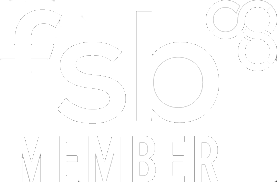Oh, the cold email. You've likely received one in the past. Maybe it was missing your name, perhaps a vague salutation like, "Dear [Your Business Name here]" or even worse, "Dear [Blank]." It's a bit like getting a Christmas card addressed to 'Occupant'.

Let's break it down, shall we?
The "Spray and Pray" Approach
Suppose you're targeting an ice cream parlour and a Butcher with the same email. In that case, you're not just throwing spaghetti at the wall to see what sticks – you're flinging the entire Italian restaurant.
"spray and pray" is the age-old, rather desperate strategy of sending bulk emails to an extensive list, hoping that anyone might take the bait—the digital equivalent of shouting into a void and hoping for an echo.
Delving into the numbers:
Example Time:
Let's paint a picture. Imagine you're selling a fancy, innovative cat litter tray. Now, you send a generic cold email to a list that includes dog owners, people with fish as pets, and some cat owners. It seems a bit off. Your message about the revolutionary world of feline waste management will probably fall on deaf ears (or eyes, in this case) if you're pitching to a fish enthusiast.
Using the "spray and pray" method means wasting your time and resources and potentially alienating many recipients who now view your emails as noise in their already crowded inboxes. It's the equivalent of trying to sell ice to the Eskimos while missing out on the sunbathers at the beach who'd appreciate a cold treat.
Why it's a no-go: This approach only shows one thing – your list is probably as tangled as a toddler's toy box. An inaccurate email list isn't just ineffective; it's harmful. It affects your deliverability rates and tarnishes your brand image.
The Ghost of Personalisation Past
Your email arrived in my inbox. It's got my name on it, yet starts with, "Dear [generic term]." It's the equivalent of someone waving at you, walking up, and saying, "Sorry, I thought you were someone else."
The numbers don't lie: Personalised emails deliver six times higher transaction rates. But 70% of brands fail to use them. Don't be part of that percentage.
Let's paint a picture, shall we? At a bustling party, a fellow strides up to you holds out a hand, and says, "Hey, you! Remember me?" You won't likely recall simply because they needed to introduce themselves properly and strike up a conversation centred on shared experiences or interests. This is precisely what an impersonal email feels like. A hazy, non-distinct echo of "Hey, you!"
Chilling Figures of Neglect:
Real World Whoppers:
The Sting in the Tail:
The tragedy of non-personalisation is the missed connection. Sure, we all get the odd email addressed to "Dear [Client Name]" or "Hello [First Name]." It's a facepalm moment for the sender but for the recipient? It's a lost opportunity for the business and a reminder that they're just a number in a vast database.
Personalisation is the bridge between brands and consumers in the digital age. When executed correctly, it's like a warm, hearty handshake – memorable, effective, and the beginning of a fruitful conversation. So next time you send out an email, remember: personalisation isn't a choice; it's an expectation. And trust us, it pays to meet it.
No Sign, No Fine? Think Again.
An email without a signature or contact details is like serving a pie without a filling. Where's the substance? And a CTA (Call to Action)? Goodness me, it's like baking a cake and forgetting the sugar.
In the world of cold emailing, your email signature is not just a polite ending but your digital handshake—a critical bit of real estate at the end of your message that can significantly bolster credibility and brand recall.
Let's crunch the numbers:
Some noteworthy examples:
It's More Than Just a Name:
Apart from the credibility and trust aspect, signatures offer a chance for brand visibility and consistency. A study revealed that consistent brand presentation across all platforms increases revenue by up to 23%. Your email signature, laden with your logo and branding colours, can serve as another touchpoint, reinforcing your brand.
Call to Action (CTA) is Crucial:
Without a CTA, your email is like a suspense novel without the last chapter. Readers are left hanging, wondering, "What's next?".
CTAs in the email body are paramount, but the signature section can also carry a secondary CTA, be it an invite to an event, a link to a new blog post, or a nudge towards a promotional offer. CTAs can increase conversion rates dramatically. Emails with a single call-to-action increase clicks by 371% and sales by 1617%. And And missing them out? It's a surefire way to let potential business slip through your fingers.
To put it bluntly, if your email were a theatre show, your signature would be the encore. It leaves an impression, gives that final nudge, and can be the star of the show if done right. So next time you draft that email, make sure the signature isn't an afterthought but a well-crafted finale.
The Disappearing Click Trick
Ah, the phantom "click here" with no URL. It's not just a faux pas; it's an email catastrophe. Reality check: 65% of users prefer emails that contain mostly images, compared to 35% who prefer text primarily. So, when you say "click here" and leave them hanging, it's like telling them there's a party but not giving them the address. A missing URL in a "click here" instruction in email marketing isn't delightful or mysterious—it's downright frustrating.
The Stats Speak Loud and Clear:
Real-World Whoopsies:
The Moral of the Story: If you're prompting your readers to act, you must guide them clearly and accurately. Ensure every CTA has been tested and directs the reader to the desired location. After all, it's not just about the click; it's about where that click leads. In the vast world of email marketing, CTAs are your compass. Make sure they're pointing the right way.
Unsurprisingly, email marketing remains the king of the marketing kingdom in our digital age. Why? It's direct, personal, and, when executed with finesse, delivers results that would make any business owner jump for joy. Let's dive deep into the 'why's and 'how's, supported by some irresistible facts and figures.
Unparalleled ROI We mentioned the jaw-dropping figure earlier: an average ROI of £38 for every £1 spent. But where does that magic number come from?
Building Relationships Over Time
Unlike a one-off advertisement, email marketing is a continuous conversation with your subscribers.
Mobile Compatibility
Did you know 46% of all email opens occur on mobile devices? In this mobile-first world, email marketing is readily consumable on the go.
Cost-Effective
Email marketing is a steal compared to traditional marketing channels like TV, radio, or print.
To sum it up, think of email marketing as the seasoned chef of the digital marketing world. With the right ingredients (your content) and method (strategy and personalisation), it whips up dishes (campaigns) that leave people craving for more.
So, are you ready to get cooking? 🍳💌
And that's where Local Marketing Made Easy waltzes in.
So next time you think of cold emailing, remember – it's not just about sending an email; it's about forging a connection. And if you need a hand with that, you know where to find us.
Local Marketing Made Easy is a full-service local marketing agency based in Greenwich, London. We can show you how a good marketing strategy can increase sales - ultimately putting more money in your pocket.
To see how we can help your business, call us on (0203) 303 0625 or book a callback request via the form below.


